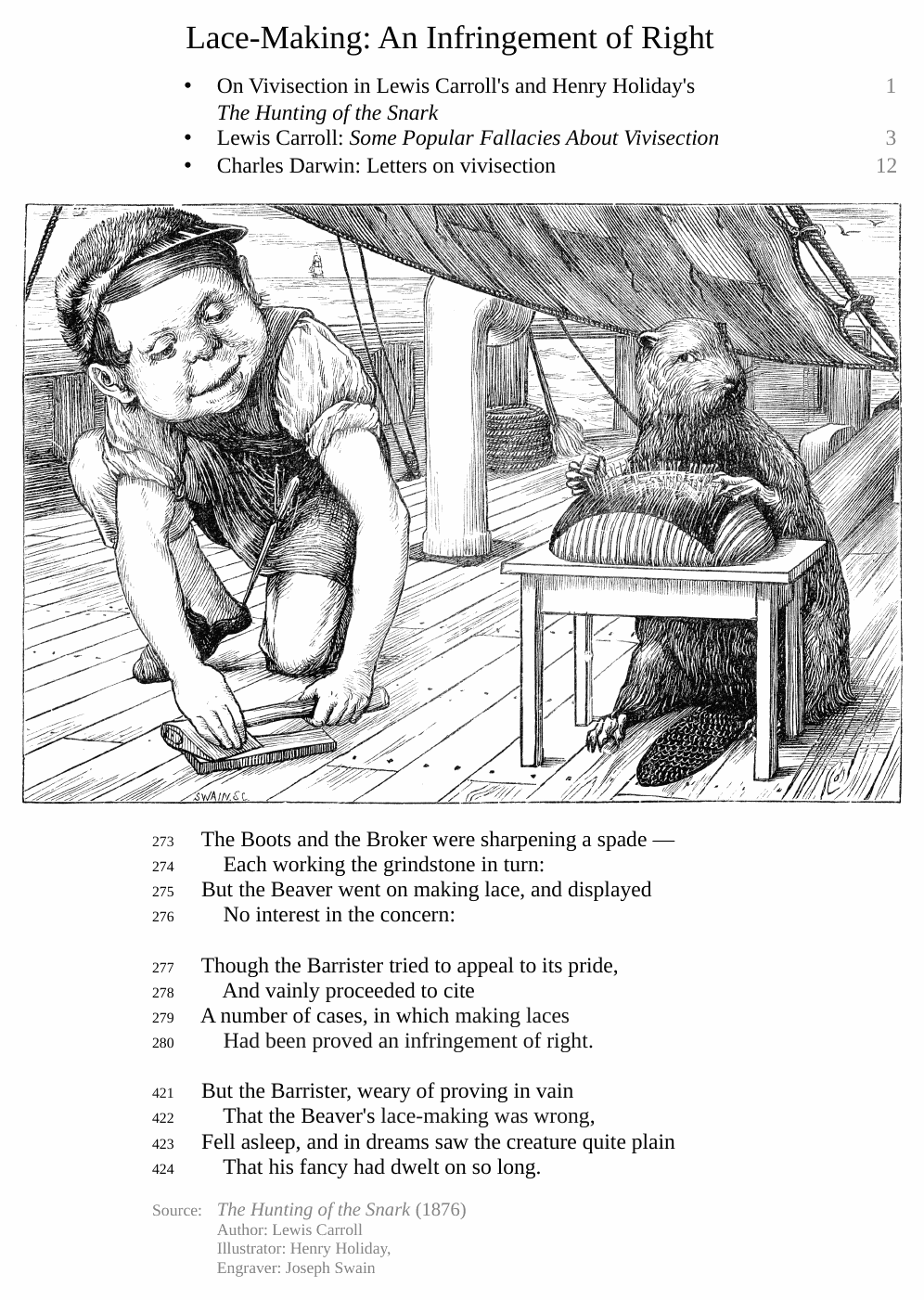Did you know that lace-making is evil?
273 The Boots and the Broker were sharpening a spade—
274 Each working the grindstone in turn:
275 But the Beaver went on making lace, and displayed
276 No interest in the concern:277 Though the Barrister tried to appeal to its pride,
278 And vainly proceeded to cite
279 A number of cases, in which making laces
280 Had been proved an infringement of right.
421 But the Barrister, weary of proving in vain
422 That the Beaver’s lace-making was wrong,
423 Fell asleep, and in dreams saw the creature quite plain
424 That his fancy had dwelt on so long.
 In Lewis Carroll‘s The Hunting of the Snark, the Beaver seems to have the Boots (portmanteau word for the maker of “Bonnets and Hoods”?), the Broker and the Barrister against him. Before the Butcher became the Beaver’s friend, it also was the Butcher who was sharpening a spade, but only in the illustration by Henry Holiday, not in Carroll’s ballad.
In Lewis Carroll‘s The Hunting of the Snark, the Beaver seems to have the Boots (portmanteau word for the maker of “Bonnets and Hoods”?), the Broker and the Barrister against him. Before the Butcher became the Beaver’s friend, it also was the Butcher who was sharpening a spade, but only in the illustration by Henry Holiday, not in Carroll’s ballad.
In the tragicomical Snark ballad, The Barrister complains more than once about The Beaver’s lace-making. Why should a peaceful activity like lace-making (see lines #277 to #280 of the Snark) have “proved an infringement of right”? The lace-making Beaver may have been used by Carroll to address dissection and vivisection in context with C. L. Dodgson’s (aka Lewis Carroll’s) involvement in the vivisection debate.
Links:
- Lace-Making: An Infringement of Rights
- lace-needles
- fork
- Charles Darwin’s microscopes
- Charles Lutwidge Dodgson’s microscope
- VIVISECTION AS A SIGN OF THE TIMES, 1875, by Lewis Carroll
Literature: Mayer, Jed. “The Vivisection of the Snark.” Victorian Poetry 47, no. 2 (2009): 429–48.
2017-10-15, update: 2022-07-04

